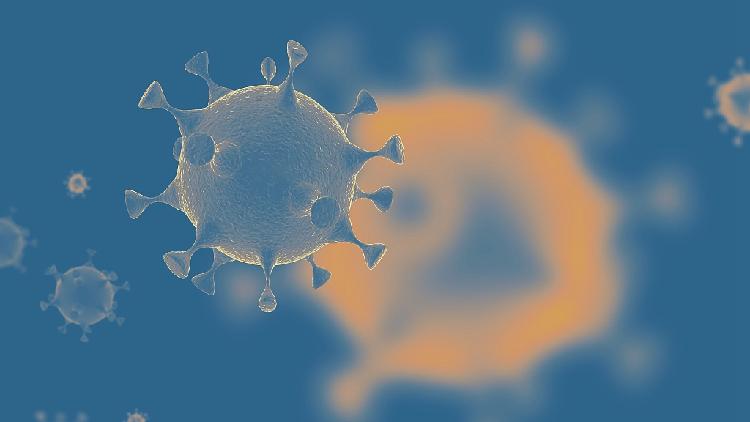

The conspiracy theory that the new coronavirus was created in a laboratory has been circulating since the start of the COVID-19 outbreak, although scientists from different countries have refuted it over and over again and highlighted the virus’s natural origin.
So how exactly do scientists know that the SARS-CoV-2 virus originated from an animal, probably a bat, and was not made in the laboratory?
Polly Hayes, Professor of Parasitology and Medical Microbiology at the University of Westminster, explained the question in an article published on the British website. The conversation earlier this week, citing multiple studies.
No signs of tampering in SARS-CoV-2 genetic material
Hayes noted that if the virus had been genetically engineered in a laboratory, there would be signs of tampering in the genome data.
This would include evidence of an existing viral sequence such as the backbone of the new virus and obvious genetic elements inserted (or removed).
But the genetic sequence of SARS-CoV-2 has been publicly shared thousands of times by scientists around the world, and no such evidence has ever been found.
He added that it is highly unlikely that the techniques used to genetically modify the virus will not leave a genetic signature, such as specific pieces of DNA code.
SARS-CoV-2 evolved from a previous wild coronavirus
The SARS-CoV-2 genome is similar to that of other bat coronaviruses, as well as that of pangolins, all of which have a similar general genomic architecture.
Furthermore, the differences between the genomes of these coronaviruses show typical natural patterns of coronavirus evolution, suggesting that SARS-CoV-2 evolved from a previous wild coronavirus.
SARS-CoV-2 and a bat virus in Wuhan’s laboratory significantly different in evolutionary terms
Some media reports have said that SARS-CoV-2 may come from another known bat virus (RaTG13) found by researchers at the Wuhan Institute of Virology, since the genomes of the two viruses were 96 percent similar between yes.
But Hayes clarified that, in evolutionary terms, this actually makes them significantly different, and the two have been shown to share a common ancestor. That means that RaGT13 is not an ancestor of SARS-CoV-2.
SARS-CoV-2 shared similar characteristics with related coronaviruses
One of the key features that differentiates SARS-CoV-2 from other coronaviruses is a particular “spike” protein that binds well with another protein on the outside of human cells called ACE2. This allows the virus to latch on and infect a variety of human cells.
However, other related coronaviruses have similar characteristics, providing evidence that they have evolved naturally rather than being artificially added in a laboratory.
Most infectious diseases and all known coronaviruses are of animal origin.
An estimated 60 percent of known infectious diseases and 75 percent of all new, emerging, or reemerging diseases in humans have animal origins.
SARS-CoV-2 is the newest of the seven coronaviruses found in humans, all of which come from animals, be it from bats, mice, or pets.
The mixing or “recombination” of different coronavirus genomes in nature is one of the mechanisms that produce new coronaviruses. There is now more evidence that this process could be involved in the generation of SARS-CoV-2.
SARS-CoV-2 likely originated from bats
In fact, SARS-CoV-2 probably evolved from a viral variant that was unable to survive for a long period of time or that persists at low levels in bats.
Coincidentally, the ability to invade human cells evolved, and it accidentally made its way in humans, possibly through an intermediate animal host, where it later thrived.
Or an initially harmless form of the virus could have leaped directly into humans and then evolved to become harmful as it passed between people.
Bats were also the source of the viruses that caused Ebola virus, rabies, Nipah and Hendra virus, Marburg virus disease, and influenza A virus strains.